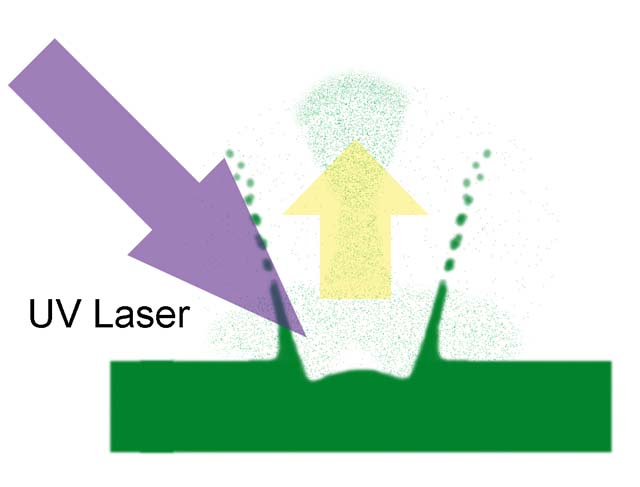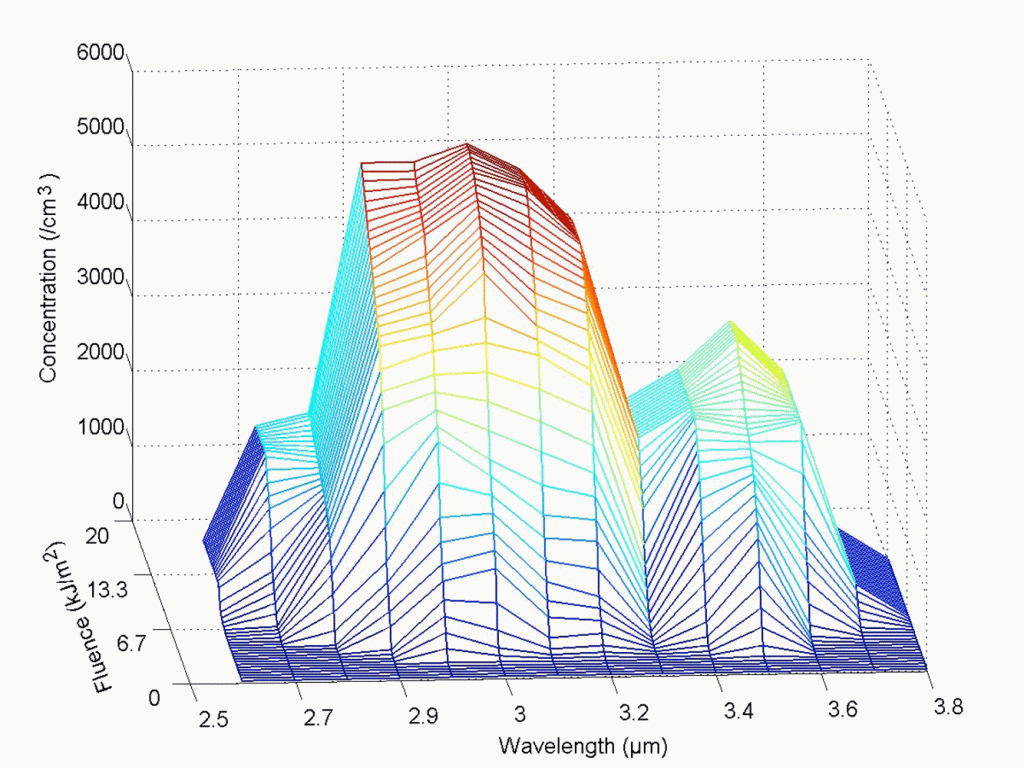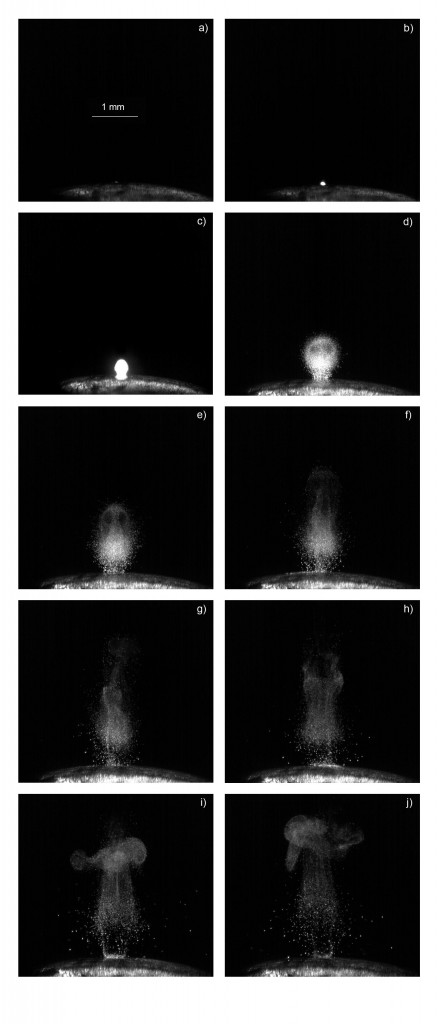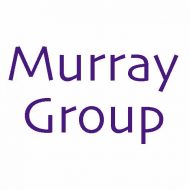
The main goal of the Murray Group is to build better instruments for chemical analysis centered around laser ablation and mass spectrometry. The best way to build better instruments is to understand the chemical and physical processes behind them. We are investigating the fundamental processes of laser ablation and ionization. These include the effect of wavelength and energy on desorption, ablation and the production of ions from biological samples.
Laser Ablated Particles

What kinds of particles are created when you shoot a sample with a laser for sampling? Creating ions? What is the sample is tissue? We use a combination of particle sizing instruments to find out. We especially like infrared lasers because they are more efficient at removing material. The trick is to make them remove material that is the most efficient for the mass spectrometry analysis that you want to do.
Fast Photography

In these experiments, glycerol ablation was studied using fast photography. An infrared laser was used to irradiate a droplet of glycerol and after an adjustable delay, a dye laser strobed the expanding plume. The scattered light was imaged with a high-speed CMOS camera. The time delay between the IR and UV lasers was varied from tens of nanoseconds up to a millisecond.

Sublimation Electrification

When exposed to vacuum, the crystals of certain organic molecules fracture and eject charged particles and clusters highly charged ions. We are using a simple apparatus to measure the charge produced by these compounds.
Recent Results
Systematic assessment of surfactants for matrix-assisted laser desorption/ionization mass spectrometry imaging
ASMS 2016: Systematic Assessment of Surfactants for Matrix-Assisted Laser Desorption/ Ionization Mass Spectrometry
Publications
- Lasers for matrix-assisted laser desorption ionization
- Sublimation Electrification of Organic Compounds
- Systematic assessment of surfactants for matrix-assisted laser desorption/ionization mass spectrometry imaging
- Particle size measurement from infrared laser ablation of tissue
- Particle formation by infrared laser ablation of MALDI matrix compounds
- Particle Production in Reflection and Transmission Mode Laser Ablation: Implications for Laserspray Ionization
- Finite element simulation of infrared laser ablation for mass spectrometry
- Particle Formation in Ambient MALDI Plumes
Presentations
- Posts not found

